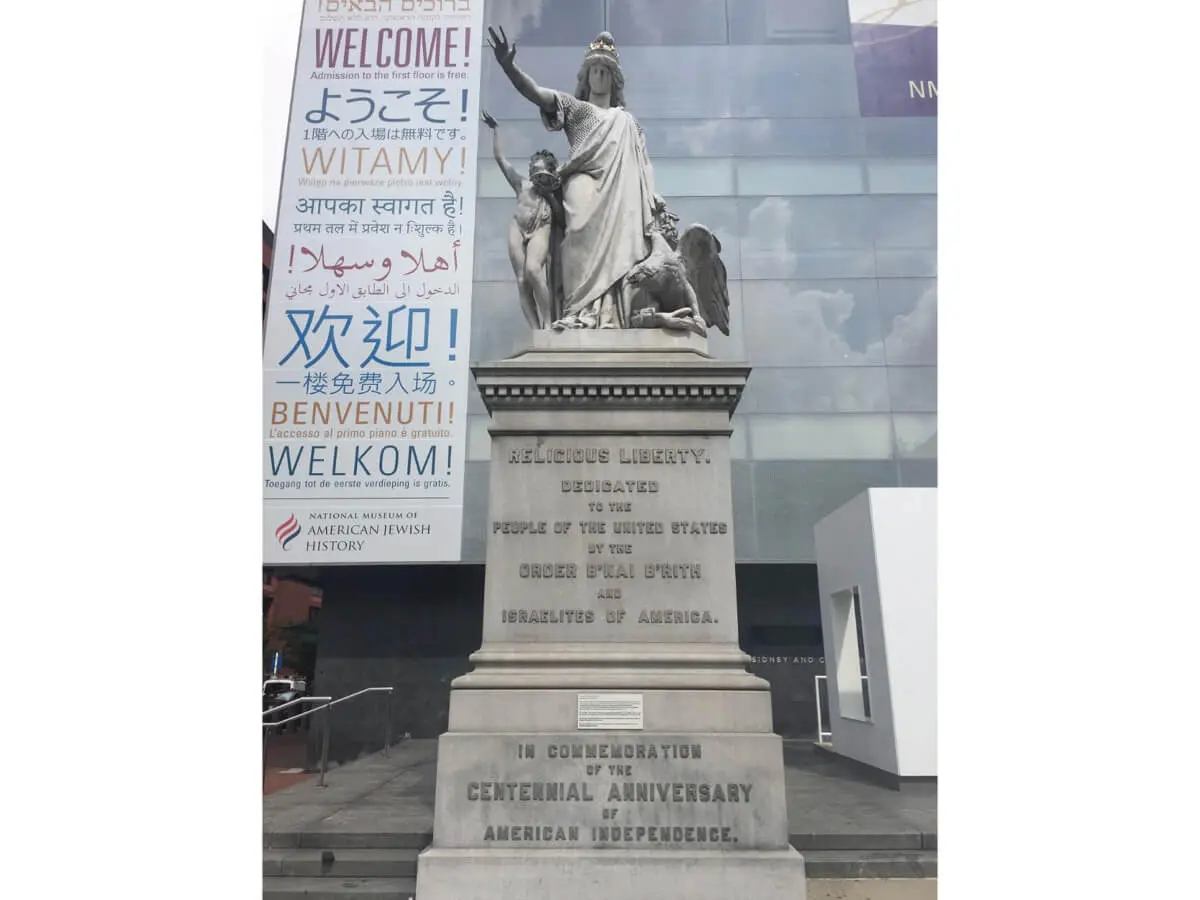“I feel my inability to express myself fully on this expansive subject, and I must now beg of you to allow my work to speak for itself and for me.” – Moses Jacob Ezekiel, speech at the unveiling of Religious Liberty, 1876
Religious Liberty was to be presented to the United States at the Centennial International Exhibition, held in Philadelphia to celebrate the 100th anniversary of the signing of the Declaration of Independence. The commission went to Moses Jacob Ezekiel, a young Jewish sculptor from Virginia living in Rome.
Ezekiel would spend forty years living in Italy as a friend of the elite, feted sculptor, and practicing Jew. He consorted with celebrities, royalty, and political dignitaries. At the time of the commission, Ezekiel was a recent graduate of the Virginia Military Institute who as a teenager fought for the Confederacy during the Civil War. A complicated man, he sought commissions for Confederate monuments and at the same time received commissions for Union monuments, and from the Federal government for work decorating the United States Capitol.
The highly-classical, allegorical marble presents Liberty as a ten-foot woman, wearing a coat of mail partly covered by a toga. Liberty dons a Phrygian cap, the pilleus libertatis bestowed on freed slaves, with a border of thirteen golden-colored stars representing the original colonies. In her hand is a laurel wreath of victory, which also rests on fasces, a bundle of birch rods tied together with a ribbon, as a symbol of power and unified strength. The fasces are covered by an open book, meant to signal the U.S. Constitution. Liberty extends her right arm protectively over an idealized, nude young boy standing at her right. Meant to personify Faith, the boy grasps a flaming lamp, and he raises his other hand up to heaven. At Liberty’s feet is an eagle, a well-recognized emblem of America, that attacks a serpent signifying Intolerance. The eagle’s sharp, oversized talons grip the serpent’s body, flipped on its back, as the bird attempts to quash its foe.
The group stands on a pedestal bearing the inscription “Religious Liberty, Dedicated to the People of the United States by the Order B’nai B’rith and Israelites of America.”
The Centennial Exhibition
From May 10 to November 10, 1876, nearly ten million visitors flocked to the Centennial’s 236 acres of fairgrounds in the city dubbed the birthplace of liberty, to celebrate the great achievements of a young country as well as the thirty-six foreign nations participating in the exhibition. One of the largest buildings, Memorial Hall (now the Please Touch Museum), showcased art from the western world.
Unfortunately, delayed by both Ezekiel’s perfectionism and B’nai B’rith’s failure to provide timely payment, Religious Liberty did not touch U.S. soil until two weeks after the Centennial ended its six-month run. The official guide for the exhibition indicated that the monument’s intended location would have been a prime spot near Memorial Hall. Instead, on Thanksgiving day, 1876, Religious Liberty was unveiled at a nearby location in Fairmount Park.
Top image: National Museum of American Jewish History façade with Religious Liberty, photo by Jeff Goldberg/Esto for Ennead Architects.
Image at right: Religious Liberty, photo by Samantha Baskind
This exhibition was guest curated by Samantha Baskind, Ph.D.

Religious Liberty has been publicly acclaimed for well over a century. Explore the monument and its creator’s intriguing history, including two relocations and four dedications, through the artifacts and stories below. Scroll through to the right and click on each image to learn more. Unless otherwise indicated, all images are from the collection of the National Museum of American Jewish History.
The core message of the Museum’s permanent exhibition and that of Religious Liberty are symbiotic. Religious Liberty boldly announces its purpose, which the Museum slowly but forcefully unfolds.
The leitmotif of freedom runs throughout the Museum’s three-floor installation, aiming to demonstrate what Jews can achieve in an environment that allows them the same opportunities as all other citizens. A trifold brochure that visitors can pick up as they walk into the Museum communicates this very idea: “NMAJH brings to life a story of transformation that could only happen in America.”
At the end of the Museum’s installation, a quote from Jewish poet Emma Lazarus sums up the overriding point: “Until we are all free, we are none of us free.” The Museum poses a final question beneath that essential imperative: “What does freedom mean to you?”
And when visitors emerge from the building, they encounter Ezekiel’s towering sculpture anew.
Want to learn more? There is much more to learn about this fascinating history. Here are just a few suggestions for books and online exploration to take a deeper dive.